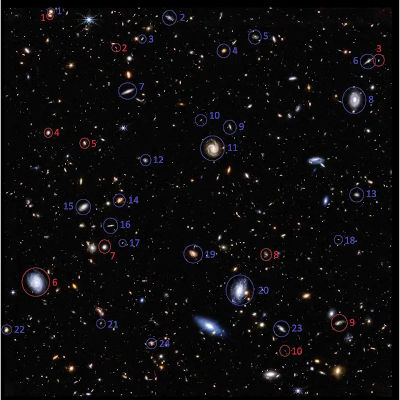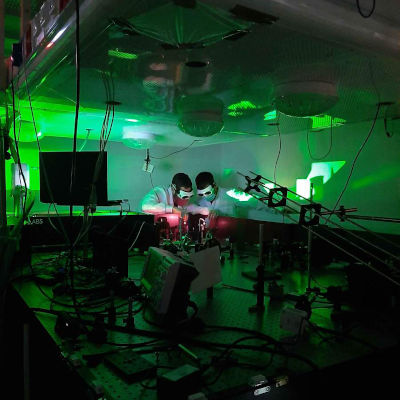Quantum Paradoxes: The Disembodied Flow of Angular Momentum
Oct. 10, 2024. 4 mins. read.
26 Interactions
A new quantum experiment reveals angular momentum flowing without carriers—defying Newtonian physics and hinting at revolutionary tech advances in communication and cryptography.
Introduction
Quantum mechanics, emerging in the 20th century, was a “black swan” event for the scientific world and popular science enthusiasts alike. It disrupted the classical understanding established by Newtonian physics, particularly in how subatomic particles were expected to behave. The experimental results of quantum mechanics contradicted predictions based on traditional physics, fundamentally altering our comprehension of the natural world and leading to revolutionary scientific theories. Conservation laws, fundamental to both classical and quantum physics, are rooted in nature’s symmetries. Though their conceptual foundation has long seemed secure, quantum mechanics continues to reveal surprises. A paper titled “Angular Momentum Flows without anything carrying it” by Yakir Aharonov, Daniel Collins, and Sandu Popescu explores how conserved quantities, like angular momentum, can be exchanged between systems at distant locations. Remarkably, the study demonstrates that these exchanges can occur even across regions where the probability of particles or fields being present is nearly zero.
They explain a strange concept whereby angular momentum flows through space without anything carrying it which is counter intuitive for the mind to fathom. In simpler terms, it’s like a mysterious force moving from one place to another without any obvious carrier—no particles, no fields, just a “disembodied” transfer.
What is the classical way of understanding conservation laws?
Conservation laws form the foundation of our understanding of physics, and many of the formulas you learned in high school rely on them. These include the conservation of energy, linear momentum, and angular momentum. These principles apply to closed systems and arise from the symmetries of nature. You’ve likely encountered them in everyday situations. For instance, when spinning on a chair and pulling your arms in, you spin faster due to the conservation of angular momentum.
Physicists have long believed that conserved quantities, like momentum or energy, must be transferred locally—from one region to the next, with particles acting as carriers. Imagine throwing a ball: the ball carries momentum, and as it moves, it transfers that momentum to whatever it hits.
The Quantum Cheshire Cat Effect
In a 2013 quantum mechanics experiment, a phenomenon known as the “Quantum Cheshire Cat” was observed. The name comes from the disappearing Cheshire Cat in Alice in Wonderland, and parallels have been drawn between the cat’s behavior and that of a particle in the experiment. Researchers found that in certain quantum scenarios, a particle and one of its properties—such as angular momentum—can be separated. To picture it, imagine the smile of the Cheshire Cat lingering even when the cat itself is gone. In the quantum realm, properties like angular momentum can “detach” from the particle and appear to exist independently in different locations.
So, what does this experiment have to do with angular momentum? Extending these findings, the researchers (Aharonov, Collins, and Popescu, “Angular Momentum Flow Without Anything Carrying It.”) demonstrated that angular momentum can be transferred across space without the need for a physical carrier. Traditionally, it was believed that angular momentum would be transferred by spinning particles, but the experiment showed the opposite: angular momentum can be exchanged between two regions of space without any particles or fields (the usual carriers) present in the intervening space.
The Experiment
In a quantum mechanics experiment detailed in the above paper, a fascinating effect was discovered involving a quantum system with a particle inside a box. The box was divided into two regions: one reflective and the other interacting with the particle’s spin. As the particle moved, its spin—carrying angular momentum—began to act independently, transferring to different positions even though the particle itself remained confined to a single location. This phenomenon is referred to as the dynamic Cheshire Cat effect.
This finding challenges long-held views on conservation laws. In classical physics, momentum or energy is always expected to be tied to a physical object, something tangible like a ball, planet, or particle. However, in the quantum realm, properties such as angular momentum can behave in ways that defy classical intuition, showing that things aren’t always as they seem.

What is the Significance of This Experiment
Beyond intellectual curiosity, this experiment could reshape how we view the world and lead to technological advancements. For example, this type of quantum behavior might one day be harnessed for new forms of communication, where information or energy is transferred in unconventional ways. Such developments could pave the way for breakthroughs in quantum computing and cryptography, where the ability to manipulate quantum properties like angular momentum in non-traditional ways could revolutionize how data is processed and secured.
Conclusion
The flow of angular momentum without a physical carrier is yet another reminder of the counterintuitive nature of the quantum world. It highlights how quantum mechanics diverges from the deterministic behavior of classical Newtonian physics. Additionally, this phenomenon holds potential for technological advancements in areas like cryptography and quantum computing, where such non-traditional quantum behavior could be leveraged for more secure communication and advanced computational capabilities.
Reference
Yakir Aharonov, Daniel Collins, and Sandu Popescu, “Angular Momentum Flow Without Anything Carrying It,” Physical Review. A/Physical Review, A 110, no. 3 (September 5, 2024), https://doi.org/10.1103/physreva.110.l030201.
Let us know your thoughts! Sign up for a Mindplex account now, join our Telegram, or follow us on Twitter.


.png)

.png)


.png)








3 Comments
3 thoughts on “Quantum Paradoxes: The Disembodied Flow of Angular Momentum”
"Quantum physics keeps bending our brains! With angular momentum flowing disembodied, it sounds like the universe has some secret tricks up its sleeve. Do you think understanding these paradoxes will lead to breakthroughs in quantum computing, or are we just scratching the surface of what’s possible? 🌌⚛️"
🟨 😴 😡 ❌ 🤮 💩
It's fascinating to see how experiments like this push the boundaries of what we know, offering a glimpse into a quantum world that defies our intuitive understanding.
🟨 😴 😡 ❌ 🤮 💩
Angular momentum without a carrier really shows how strange quantum mechanics is, with big potential for cryptography and computing.
🟨 😴 😡 ❌ 🤮 💩